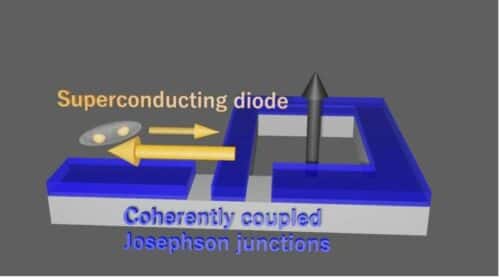Researchers at RIKEN have discovered the superconducting diode effect using interconnected Josephson junctions, which offer promise for energy-efficient electronics and may steer the direction of next-gen superconducting technologies.

The superconducting (SC) diode effect, a unique phenomenon where a material exhibits superconductivity in one direction and resistance in another, has garnered significant attention in physics research. Its consistent observation and control across various materials could pave the way for innovative integrated circuit designs.
Researchers from RIKEN and other institutes in Japan and the US have recently detected the SC diode effect in a novel device comprising two interconnected Josephson junctions. Inspired by a theoretical paper from NanoLetters, their work delves into the nonlocal Josephson effect, a unique superconducting transport within these junctions. This study could lay the foundation for innovative technologies centred on coupled Josephson junctions.
Recent research emphasises SC transport within interconnected JJs. Researchers utilized a device featuring two JJs linked by a singular SC lead for their study. If this shared SC lead is thin, JJs cohesively link and influence one another. By integrating one JJ into the SC loop and observing the other, the team can analyze how their mutual coherent coupling impacts JJs’ SC transport.
By adjusting the phase of the interconnected JJs, Matsuo and his team successfully generated the SC diode effect. Their findings provide insights into achieving this effect in devices based on coupled JJs and a deepened understanding of the underlying physics. The significance of the SC diode effect lies in its potential application for energy-efficient rectification in future SC circuits. This effect manifests when SC devices lack time-reversal and spatial-inversion symmetries. The outcomes indicate that controlling the phase of the interconnected JJs can disrupt these symmetries, suggesting the potential realization of other unique SC phenomena in coupled JJs when these symmetries are broken.
This researchers claims that the recent study could pave the way for advancements in electronics engineering. Their techniques might lead to the creation of superior superconducting electronic parts. The efforts may motivate global researchers to undertake comparable research with coupled JJs.They plan to explore exotic SC phenomena beyond the SC diode effect by manipulating the coherent coupling of the JJs.








